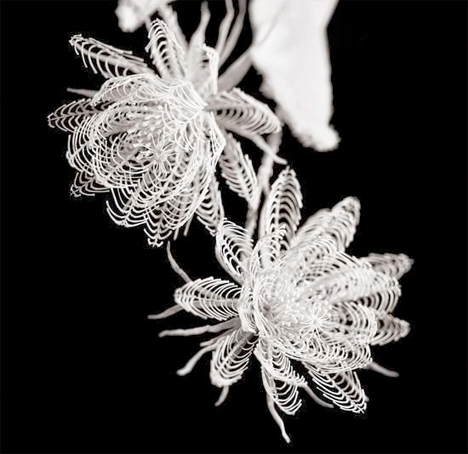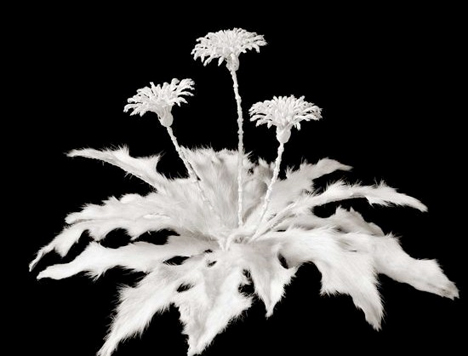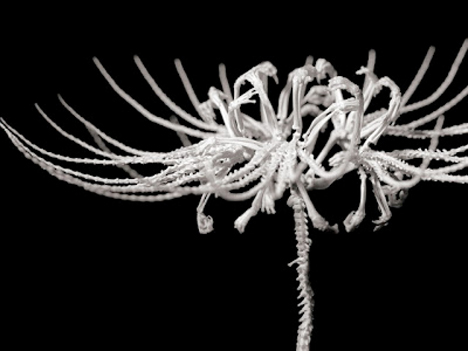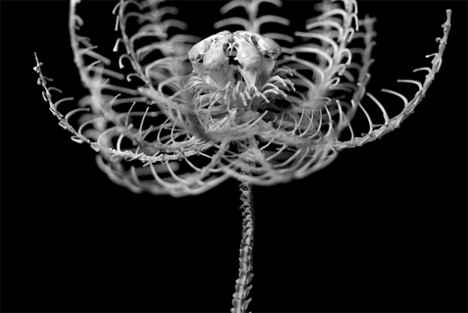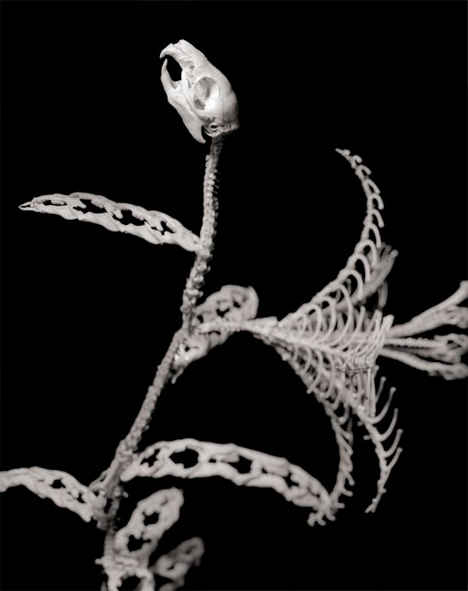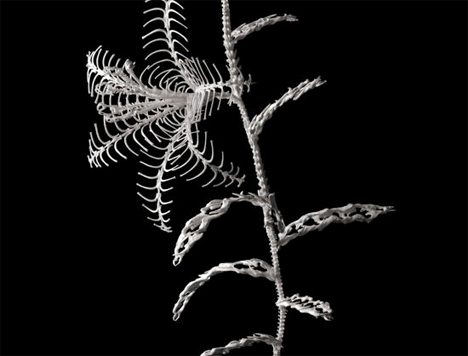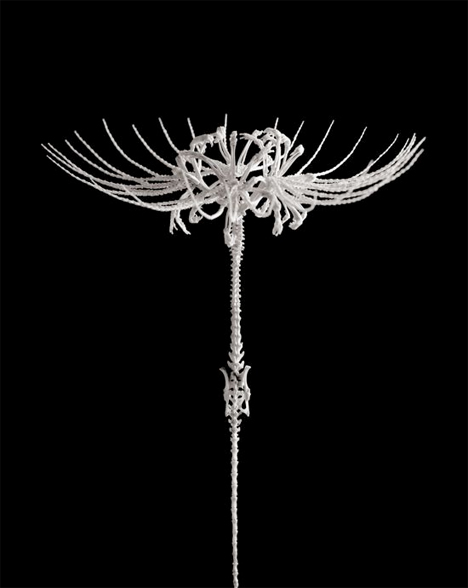A white sculpture of a dandelion becomes infinitely more interesting the closer you look, as you begin to pick out the tiniest of paws, vertebrae and tufts of fur. Petals are made up of rib cages, stems of spines. Skulls come together to form the base of the flower. Tokyo artist Hideki Tokushige produces these honebana, or bone flowers, in honor of the cycles of nature.
Tokushige procures (already-dead) carcasses of rodents and keeps them frozen so the flesh can be picked off the skeletons more easily without causing damage to the delicate bones.
Once he’s finished completing and photographing the sculptures, Tokushige disassembles them and buries the remains. Using these mice, which are kept in cages throughout their short lives and then frozen to feed to other animals in the least grisly way possible, reflects “a sense of our modern view of nature and life.”
“Some might think it weird,” says Tokushige of using bones. He states that proximity to bones was normal throughout much of human history, but we’re not as used to seeing them anymore. “Still, someday we all go back to bones and back to soil.” The artist crafts the bones into flowers as a means of paying respects to the dead, our cultural customs and the realities of the life cycle. Flowers are temporary, but bones can last millennia.
